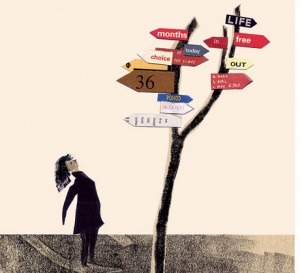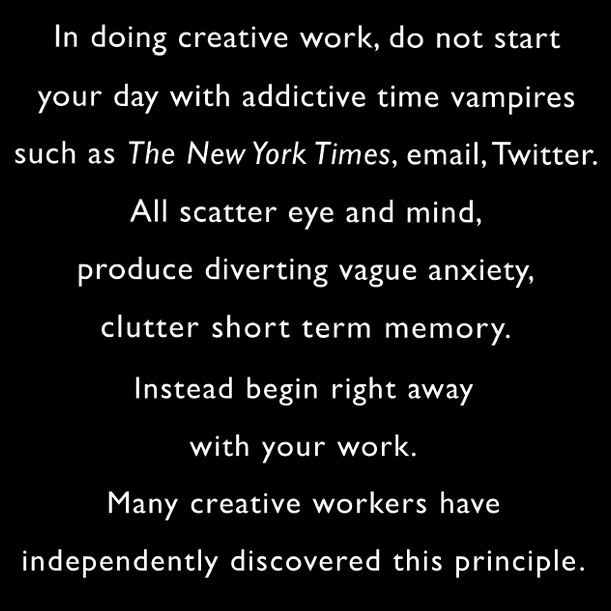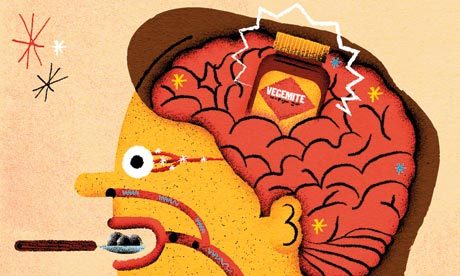We had an unintended, somewhat depressing, Netflix theme going recently: documentaries of forgotten women who led enigmatic lives. Given the attention they have received in recent years, it’s as if their lives only became interesting after their deaths.
You can certainly read all about the stories of Joyce Vincent and Vivian Maier on Wikipedia, but from such sources you only get, as Emily Dickinson would say,“the facts but not the phosphorescence.”
What makes these documentaries necessary are the detective work the filmmakers perform as they answer the questions we as viewers have about their subjects’ lives. More to the point, the films attempt to find and interview the people who knew these women and whose recollections, of necessity, can construct only incomplete pictures.
Finding Vivian Maier
For Finding Vivian Maier, pictures is the operative word.
The filmmaker, John Maloof, bought a trunk of her belongings at an auction house, discovered sheets of her negatives, and was intrigued by their content and artistry. He sought out everything else she had squirreled away and stuffed into a crammed storage unit.
It was clear from what she left behind that Vivian was a hoarder: newspapers, clothes, hats, shoes, trinkets, election badges, receipts, bills, uncashed tax refund checks, bus and rail tickets – ephemera of all sorts. But along with all of that were thousands and thousands of B&W negatives, hundreds of rolls of unexposed B&W film, color slides, and Super–8 movies from the early 1970s.
Maloof was captivated by her guerrilla street photography, her formal experiments with self-portraits, and the sometimes playful pictures she took of the children and families for whom she worked as a nanny. As a photographer, she got close to her subjects in ways that were extraordinary. Based on the evidence of her negatives, she took her craft seriously and knew that she had an eye.
(Maloof’s web site contains galleries of her photos and I strongly urge you to spend some time with them, if you’ve never seen them before. They’re both time capsules and timeless.)
To Maloof, and to others who saw these pictures, she was clearly an artist. Why, then, had no one ever heard of her? Why did she make so few prints of these remarkable images and do nothing with them? Her life – which this intensely private woman held close to her – and her choices were a mystery he felt moved to solve.
Maloof’s documentary (co-directed with Charlie Siskel) starts out being about him, his background, and his discovery of and increasing obsession with Maier. As the movie goes on, though, the detective work on Maier’s life takes center stage and Maloof wisely steps into the background where possible.
The most fascinating interviews, for me, were with the adults whom she had looked after as children and their memories of seeing Maier’s behavior when she was unobserved by her employers. While it was clear to all who met her that she was an eccentric, the children sometimes – in some cases, often – saw that eccentricity veer scarily to either aloof or threatening behavior.
The persistent question from Maloof, the professional photographers and artists he interviews, and Vivian’s acquaintances (she never really had “friends”) is: why did she keep her amazing photos a secret? Why did she do nothing with them? The impression given is that Vivian could have had a career as a significant artist had she only gone public with her photographs.
The film cannot answer that question, of course, though it seems to Maloof the primary mystery of Vivian's legacy. But it didn't strike me as a mystery at all. To me, the obvious answer to why she never cashed in on her remarkable photographs is, “Because that’s not why she took them.” She evidently got out of her picture-taking exactly what she wanted. Putting aside the fact that she appeared not to know any artists nor sought out any sort of artistic community nor even bothered to properly care for her film and negatives, it seemed clear to me that Vivian had no ambitions or inclinations to be a professional photographer.
She did not treat her photography the way most of us treat a hobby, as a refuge or comfort or renewal from our daily grind. Picture-making did not seem to give her any emotional comfort or reward. At times it appeared to be a compulsion, certainly, but not something that gave her pleasure.
Why take all those pictures then? Because the camera offered Vivian a way to hoard ephemeral things: moments, images, impressions, anything that caught her attention. As long as she knew she had the negatives or undeveloped film, then she knew she could get back to them “someday.” One of the interviewees said Maier had so many newspapers stacked in her attic room, her father had to install a steel beam to bolster the sagging floor. She treated her negatives the same way as she treated her receipts, hats, clothes, and newspapers: it was all the same to her.
Vivian clearly suffered some trauma in her life that led to her eccentric behaviors. Taking pictures may have been a way to use the camera, which was always around her neck, as a buffer between her and the world while still enabling her to participate as an observer and collector, as someone who could control the experience.
A new acquaintance asked her one time what she did. She answered, “I’m a spy.” The filmmakers imply she led a double life, working as a nanny while taking pictures of both the world and herself – a secret she held to herself as tightly as she did many others.
Dreams of a Life
Of the two films, Dreams of a Life is definitely the sadder and more disturbing movie, and the one that gnaws at me when I stop to think about it. Finding Vivian Maier, while not a light piece, has the grace of Vivian’s art uplifting it and Maloof’s dogged detective work to uncover her life’s mysteries though not all her secrets. And there is the successful recovery of a trove of photographs that would otherwise have been lost forever.
Dreams of a Life is more spare and troubling. Not least because Joyce Vincent left so little evidence of her life and activities. Former friends and co-workers who knew her can describe what she looked like, how she behaved, the stories she told, but these are only the outer edges of her life as observed by others with the center left tantalizingly, frustratingly blank. There is little to celebrate.
The film starts with the death of Joyce Vincent – or rather, the discovery of her body. To the best anyone can reconstruct, the 38-year-old died in her bedsit in a rather shabby part of London in December 2003. But her body wasn’t discovered until January 2006. What was found were her skeletal remains; as one interviewee chillingly put it, her body basically “melted into the carpet.” With no soft tissues available for forensic examination, no one can know how she died. She was only positively identified via dental records.
The story angle picked up by the media was what one would expect: how could this have happened? Where was her family? Her friends? Why did no one try to find her or call her or look her in over 2 years? Where was the landlord? The neighbors? And where were the public services? When her body was found, the television and heating were still on. And another grim, poignant detail: her body was surrounded by wrapped Christmas presents with no name tags. Her death -- and the absence of concern about her absence from the world -- became a metaphor about the lack of personal relationships in a crowded, always-connected modern society.
It’s a haunting story that caught the attention of the filmmaker Carol Morley. She took out ads soliciting information from anyone who knew Joyce, slowly locating and tracking down friends, acquaintances, co-workers, former partners, an old roommate. The family declined to participate in the movie.
As Vivian became Maloof’s muse, so Joyce became Morley’s. The timeline she created to track Joyce’s movements through her life, and particularly her difficult last years, is glimpsed throughout the film. The jumble of whiteboard notes, photographs, and news clippings introduce episodes in Joyce’s life, interview subjects, and even suggest events that Morley did not or could not include. Without information from Joyce's older sisters to fill in needed gaps, and without eyewitnesses to key points in Joyce's life, the movie's narrative is maddeningly patchy with too many questions left unanswered.
But Morley deftly turns that lack of information into an opportunity. What had been blank space instead becomes an empty canvas where every interview subject can paint their own picture of Joyce.
They describe Joyce as beautiful, funny, charming, someone who held increasingly responsible jobs – she was the person who looked absolutely put together and undoubtedly led a remarkable life. She was the center of attention -- especially men's -- when she walked into a room. She seemed an innocent and trusting soul. How could anyone so attractive and charming not lead a fascinating life?
But other details of her personality emerge from the interviews. She didn’t talk about her family. She said her father was dead when he wasn’t. The most significant detail to me was how she took on a new boyfriend’s circle of friends as her circle yet never spoke or talked about any other friends she might have had before. When a relationship ended, she drifted away from the circle and was rarely seen by them afterward. It was as if, with every new job and every new relationship, she shed her old skin -- old apartment, old friends -- and re-entered the world as a new person. A blank slate for everyone, including herself.
The most compelling interviewees, to me, were a former boyfriend Martin and her no-nonsense former flatmate Catherine. Martin seems the quintessential, conventional nice guy who tried helping Joyce and wonders if he could have done more. Catherine, on the other hand, is quick with her judgments and clear on what she knows. Her story of the last time she saw Joyce had me gobsmacked – not just Joyce’s behavior, but Catherine’s cool, unsentimental reaction to it. Catherine and Martin would have been great friends to have in your corner and may have counter-balanced Joyce’s maddening lack of focus. But Joyce deliberately pulled away from them as she pulled away from everyone and seems mainly to have drifted through her life.
Morley enjoys throwing her interview subjects a curveball on-camera to get their reactions. In one, she plays a tape of a song Joyce had recorded, ending with a giggly sign-off. They’re startled to hear her voice. They laugh and then say the cute sign-off sounds just like Joyce. Except for Catherine, who says it sounded not at all like Joyce. These contrasts become an interrogation of not only who Joyce really was – something no one will ever know – but how she is remembered and how incomplete those memories are.
If every one has their own image of Joyce, then Morley does too. Her dreams of Joyce's life are presented in re-created scenes from Joyce’s childhood and adult life based on stories Joyce told her friends. The actress Zawe Ashton plays Joyce in scenes – a disastrous birthday party, dancing at a club – that are recollected by the interviewees. The movie re-creates the discovery of Joyce’s body and the subsequent cleanup and forensic investigation of the apartment but with no attempt to visualize her corpse (I am thankful that Morley does not reproduce any photographs taken at the scene). The movie cuts between scenes of a vibrantly alive Joyce and the grim clean-up of her desolate apartment.
I don’t like recreations, as a rule; I can see the need to visually liven up a stretch of the film that would otherwise only have talking heads. But if you can’t document what actually happened, then it’s not a re-creation, it’s a fabrication. One moment particularly angered me. In it, Ashton portrays Joyce singing along to a record with a hairbrush as her microphone, echoing an earlier scene when the 5-year-old Joyce “performs” for her sisters and mother. As the record finishes, the adult Joyce stops the singalong and breaks down in tears. I understand that this is Morley's vision of the Joyce she feels she has come to know, but to me, it was needlessly sentimental glop and a violation of Joyce and her memory. Her story is sad enough without this scene gratuitously amping it up.
Both movies haunted me
Vivian and Joyce kept the world at arm’s length for reasons no one will know. They were solitary women seeking a family, I think, and never quite finding it or quite fitting in. These movies record how the people who knew them saw them, interpreted them. And the movies themselves are not objective; they frame their subjects just as interpretively.
Vivian’s life is a mystery full of clues, and her legacy is the body of work she knowingly created, albeit without any plan. Was she an artist, as so many of the commentators in the movie think? Is that why she took all of those pictures? Or was taking pictures something she was compelled to do, the same way she hoarded newspapers and receipts? Fortunately, these questions don’t have to be answered to enjoy her remarkable photographs. Vivian found a place in the world, at last. And her story, the mysteries of her life, add a captivating allure to the images the world was very close to losing.
But it’s Joyce’s story that moves me on a deeper, sadder level and that I think will stick with me longer. Partly for the simple pathos of dying alone and forgotten. Partly because this was a tragedy that could have been prevented. I want to believe that she could have reached out more and that others could have tried a little harder to reach her (though the film makes clear that in her last months, she was deliberately in hiding and was avoiding contact with everyone from her old life). In the end, it was easier to lose touch than to maintain it.
And her story moves me to ask questions of my own life, as Morley intended it to. Because we've all known people for intense periods of time, however fleetingly: work, school, the other parents in the playgroup, hobbies, church. When I look back over my life, I have carried very few people with me into the present-day from previous jobs, from all the arts classes and community theater productions I did. I spent four very intense years getting my master's, worked on many class projects with my fellow students and teachers, and got to know a few very well. Yet today, I am in only occasional touch with two or three. How well did we all really get to know each other? That's the haunting question Joyce Vincent's life raises: will anyone come looking for me?
By the way, I referred to both women here using their first names rather than their last names because I think it gentler than treating their shades as simply fodder for a stupid blog post. Kindness should be extended to these women even after the fact of their deaths.








